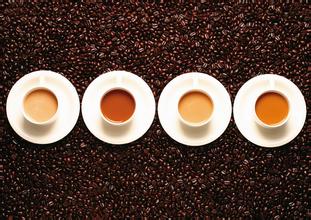How does the thickness of coffee powder affect the taste-grinding thickness map
How does the thickness of coffee powder affect the taste-grinding thickness map
Under normal circumstances, the fineness of coffee is inversely proportional to the extraction time and the extraction rate. It can be proved from hand brewing and espresso that the coarser the powder is, the smaller the extraction resistance is, the greater the flow rate is, the shorter the extraction time is, the lower the extraction rate is, and the lighter the taste is.
On the contrary, the finer the powder is ground, the greater the extraction resistance is, the smaller the flow rate is, and the longer the extraction time is, the higher the extraction rate is and the stronger the flavor is.
However, professional baristas will go against the trend and try to shorten the extraction time slightly when they encounter finer coffee powder, so as to avoid making bitter coffee with too high extraction rate. On the contrary, if you encounter coarser coffee powder, you will try to prolong the extraction time slightly, so as to avoid insufficient extraction and make insipid coffee.
French filter kettle (rough grinding), electric drip pot (medium), hand punch, siphon pot, desktop smart filter cup (medium), mocha pot (medium), espresso (fine), Turkish coffee (very fine).
According to the European Fine Coffee Association (SCAE-Speciality Coffee Association of Europe), the rough grinding of the French filter pot indicates that each bean is crushed into 100,300 particles, each about 0.7mm in diameter. In the medium rough grinding of the electric filter pot, each bean is ground into 500 grains of 800 particles, with a diameter of about 0.5 mm. Moderately ground by hand and siphon, each bean is ground into 1000 to 3000 particles with a diameter of about 0.35. The fine grinding of espresso in which each bean is ground into 3500 particles with a diameter of about 0.05mm. Turkish coffee is ground into a flour-like ultra-fine powder, and each bean is ground into 15000mm 35000 particles.

Important Notice :
前街咖啡 FrontStreet Coffee has moved to new addredd:
FrontStreet Coffee Address: 315,Donghua East Road,GuangZhou
Tel:020 38364473
- Prev

Introduction to the varieties of grinding scale of Arabica Mantenin coffee bean flavor description treatment method
Arabica Mantenin coffee bean flavor description method grinding scale variety introduction bourbon is almost all round beans, beans are a little smaller than tin card, ripening later, but the yield is 30% more than tin card. It is suitable for growing above 1200 meters above sea level, and its flavor is obviously more prominent than those below 1000 meters, but bourbon has a disadvantage that it will rest for a year as a result. The round body bourbon is full of vitality.
- Next

Oriental drinks popular in the West: the Historical and Cultural significance of Coffee
As an oriental drink, coffee is endowed with great western meaning. For hundreds of years, this mellow bitterness attracted all kinds of people, and therefore permeated all fields of modern western society, flowing like blood in the land of Europe for centuries. Today, it has become a typical representative of western culture, and once again returned to the eastern world. This is coffee.
Related
- Beginners will see the "Coffee pull flower" guide!
- What is the difference between ice blog purified milk and ordinary milk coffee?
- Why is the Philippines the largest producer of crops in Liberia?
- For coffee extraction, should the fine powder be retained?
- How does extracted espresso fill pressed powder? How much strength does it take to press the powder?
- How to make jasmine cold extract coffee? Is the jasmine + latte good?
- Will this little toy really make the coffee taste better? How does Lily Drip affect coffee extraction?
- Will the action of slapping the filter cup also affect coffee extraction?
- What's the difference between powder-to-water ratio and powder-to-liquid ratio?
- What is the Ethiopian local species? What does it have to do with Heirloom native species?

